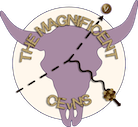Coherent CAPTAIN-Mills (CCM) is a 10 ton liquid argon scintillation detector at Los Alamos National Laboratory for the study of neutrino and beyond Standard Model physics. It is located 23 m from the stopped pion source of the Lujan Facility, and will receive $1.5\times 10^{22}$ POT in its ongoing 3-year run cycle. CCM is instrumented with 200 8-inch PMTs, of which $80\%$ are coated with...
The Coherent Neutrino Nucleus Interaction Experiment (CONNIE) aims to detect, for the first time, coherent elastic antineutrino-nucleus scattering (CEvNS) in silicon and probe physics beyond the Standard Model. To that end, the experiment has been taking data next to the Angra 2 nuclear power plant since mid-2021 with high-sensitivity detectors known as Skipper-CCDs. These pixelated sensors...
The COherent Neutrino-Nucleus Interaction Experiment (CONNIE) investigates coherent elastic neutrino-nucleus scattering (CEvNS) using high-resistivity silicon Skipper-CCDs at the Angra-2 nuclear reactor in Brazil. The introduction of Skipper-CCD technology has enabled an unprecedented low-energy threshold of 15 eV, significantly improving sensitivity to low-energy events and rare interactions....
In this work we present a study of Coherent Elastic Neutrino-Nucleus Scattering (CEvNS) with a proposed array of isotopic enriched detectors. These detectors could improve the precision of CEvNS measurements, allowing to test predictions of the Standard Model, nuclear physics and new physics scenarios, due to the correlation of the systematic uncertainties. Based on these results, we explore...
The Coherent Neutrino-Nucleus Interaction Experiment (CONNIE) operates at the Angra 2 Nuclear Reactor in Brazil. Using silicon Skipper-CCDs, CONNIE aims to identify and investigate coherent elastic neutrino-nucleus scattering (CE$\nu$NS). However, background particles from various sources, combined with the large volume of data, present significant challenges, making manual analysis of...
The Ricochet experiment is an international collaboration that aims at detecting the CEvNS process using germanium crystal calorimeters at cryogenic temperatures. The detectors can simultaneously readout the ionization and heat energies following particle interactions occurring in the crystal. This dual measurement allows to both perform particle identification, i.e. to discriminate between...
Future experiments dedicated to the detection of Coherent Elastic Neutrino-Nucleus Scattering may be powerful tools in probing light new physics. In this paper we study the sensitivity on light Z′ mediators of two proposed experiments: a directional low pressure Time Projection Chamber detector, νBDX-DRIFT, that will utilize neutrinos produced at the Long Baseline Neutrino Facility, and...
The quenching factor in silicon is a fundamental parameter for particle physics experiments that detect nuclear recoils. This is particularly critical for experiments employing CCD sensors as target materials—such as CONNIE and Atucha—which rely on it to convert ionization signals into nuclear recoil energies. Its importance extends beyond neutrino detection, playing a central role in dark...
After the detection of CE$\nu$NS, the COHERENT collaboration is exploring new physics by precisely measuring the process. However, the uncertainty of the neutrino flux normalization is limiting the precision. To reduce the uncertainty, a heavy water (D$_{2}$O) detector has taken data at the Spallation Neutron Source (SNS) at Oak Ridge National Laboratory (ORNL) since 2023. By utilizing the...
